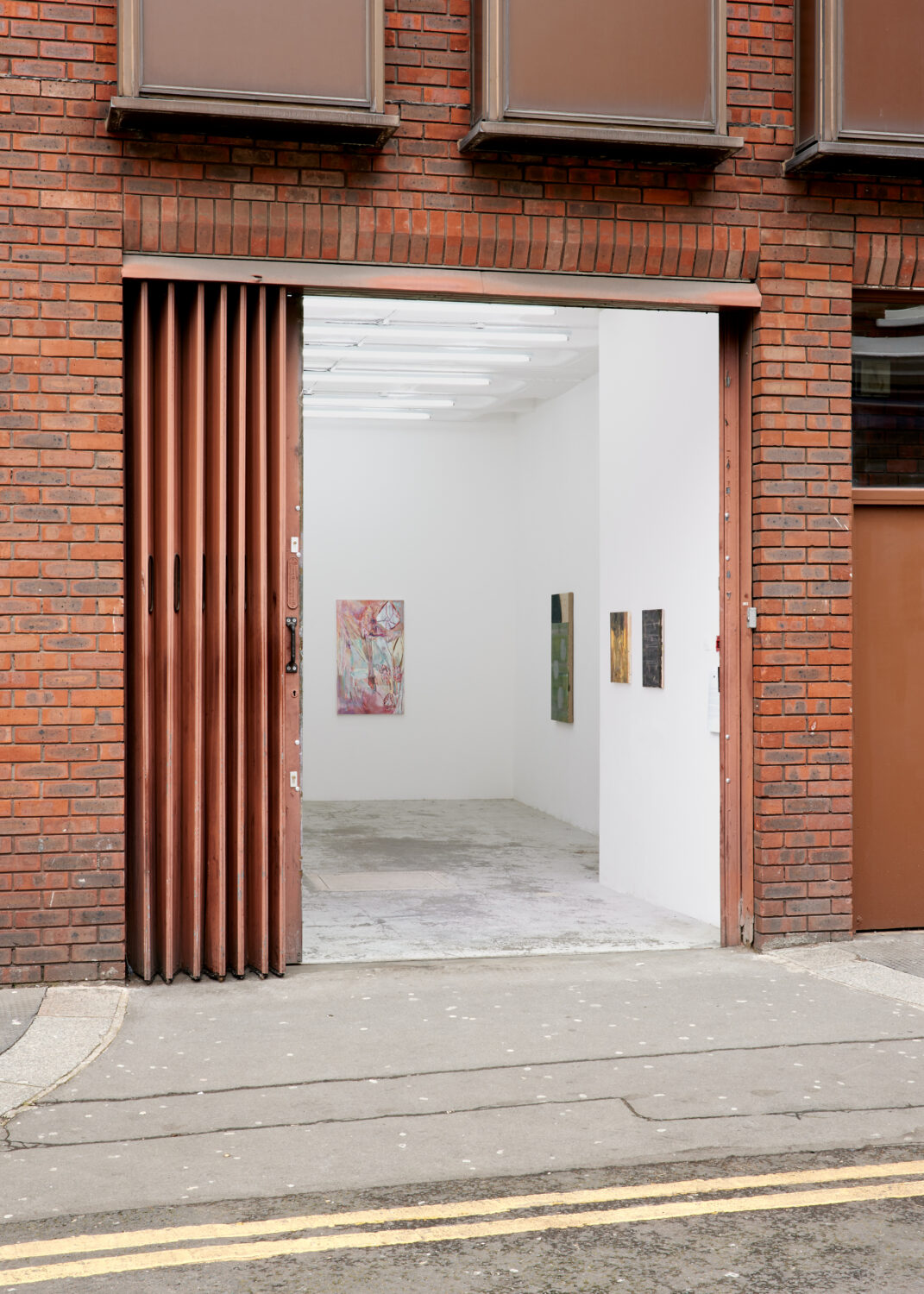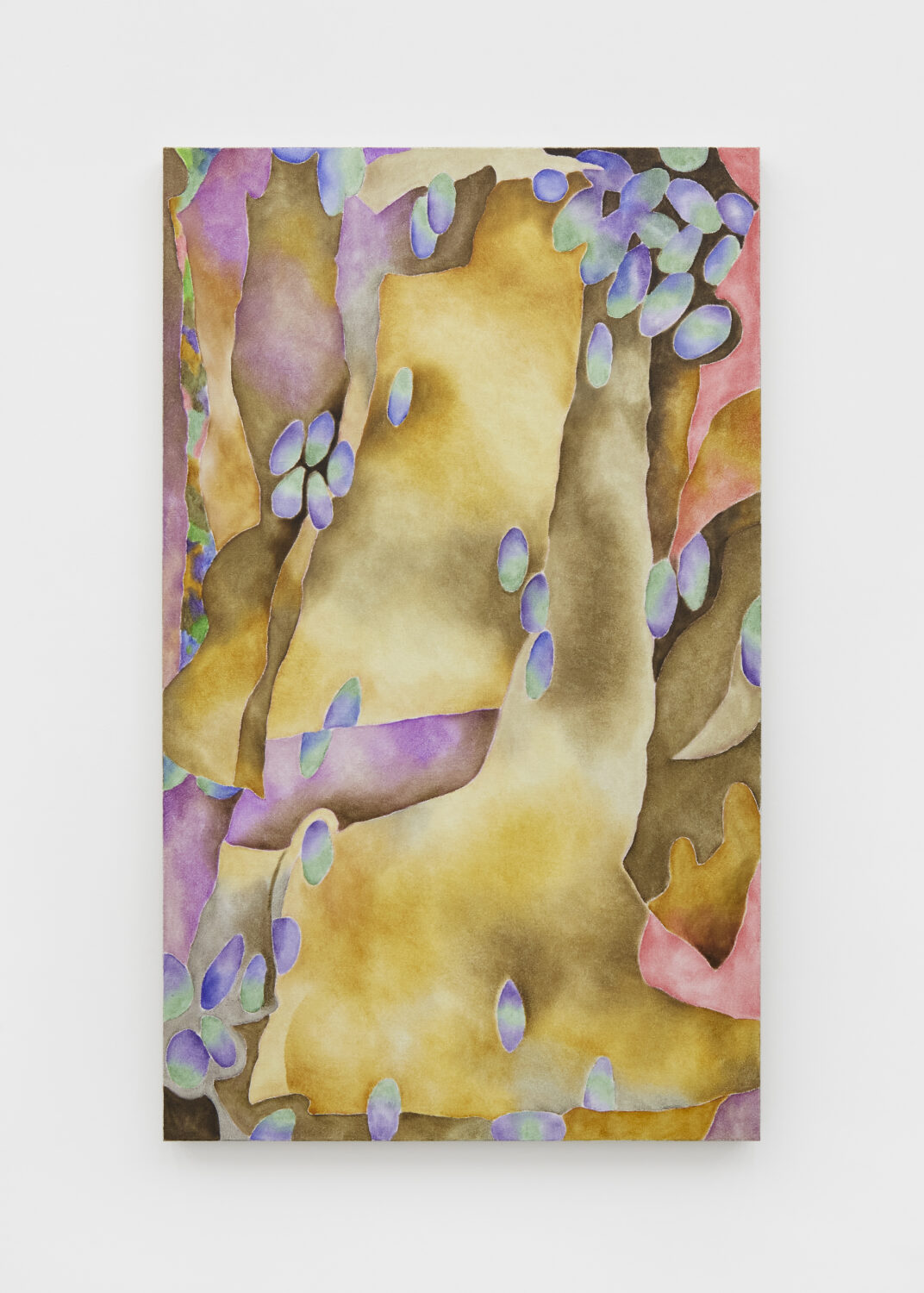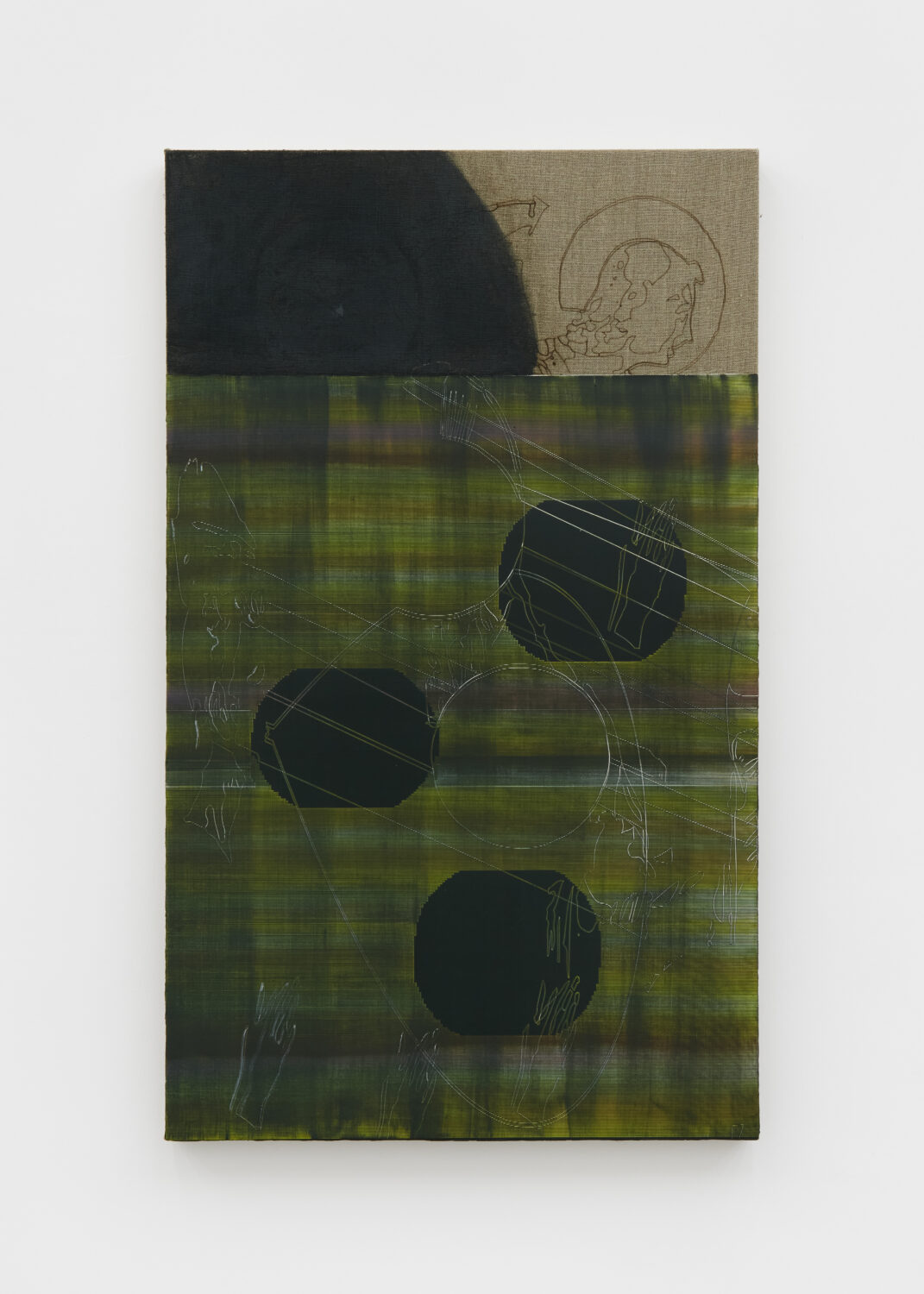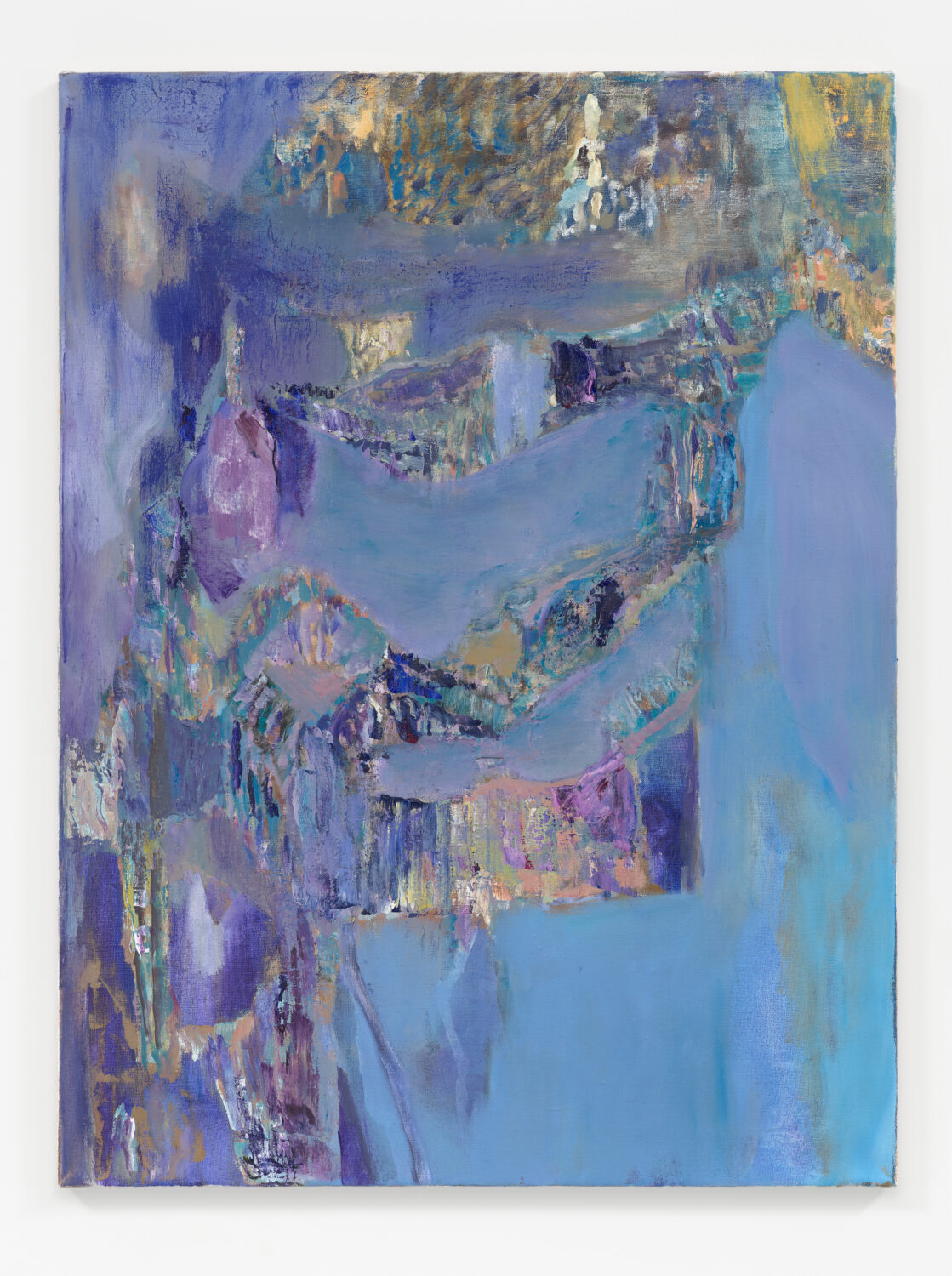At Ginny on Frederick, Three Old Friends Ponder the Possibilities of Paint
By Ed Compson, Francesca Mollett and Kiki Xuebing WangHoused within a former shop unit opposite Smithfield Meat Market in Clerkenwell, east London gallery Ginny on Frederick’s latest exhibition — a group show titled Sympathetic Magic 2 — gathers new paintings by friends Ed Compson, Francesca Mollett and Kiki Xuebing Wang. The sequel to a self-organised presentation at Zona Mista in 2019, the exhibition picks up on the artists’ preoccupation with the potential impact of painterly marks on viewers — imbuing magical, seductive, or lovingly charged intentions. In conversation with one another, below, the three artists discuss their work and common interests, reflecting on the vast possibilities of painting.

Ed Compson: [Looking back at my work from Sympathetic Magic 1,] I like the idea that these paintings have the hum of someone else’s kind of energy beneath, and you’re reacting to it on top of it.
Kiki Xuebing Wang: I remember one of your paintings in Sympathetic Magic 1 well, because I have it, so I’m reminded of you everyday. Compared to the paintings you made for this show, and our degree show — where you applied many thick layers of paint and then laser cut through it — the works in our first show together were quite …
EC: They’re quite thin.
KXW: Exactly. I was wondering if that was a conscious decision? Or was it just a different approach?
EC: I think they felt like tests at the beginning. I was testing out the limits of this little machine I built over the summer — in some ways it was about the possibilities of what I could do with the resources at the time. But now, I want to make things thicker, make it a little bit more materially rich — I’m trying to push that more. I think that’s why over the past five years since, I’ve been pushing for something more gestural.
Francesca Mollett: I feel similarly about the first Sympathetic Magic. When I saw my paintings up in that space, I felt like they were too thin as well. They were very watery, and they were actually more like how I would now begin a painting, but without going further. So for me, that show served as a critical reflection.

KXW: I think I had the opposite take from the show because I felt like my painting, back then, was a little bit too heavy in terms of the colours and how many layers I put down. Seeing you doing the floor for the first show was very inspiring, because you could see the fluidity of the paint.
EC: I love the fluidity that was happening then, and you’re getting at now with thick paint too, which is such a hard thing to do — to create something that feels like it’s always moving and shifting, it’s hard to do that. I guess that’s about building up slower, slowing down and not rushing as much?
FM: Yes, slowing down the process, and having immediate gestures that you pick apart, and then weave back together. It’s a process of constantly adjusting, so the process feels more hesitant than it did before, but then I started using the palette knife – which has some unpredictability to it — which I really enjoy.
KXW: Fran, I wanted to ask about when you started using a palette knife, and what made you start to use the tool?
FM: Well actually, I got really stuck in my second year at the RCA and I was having a bit of a crisis. I decided to start again. I began with collage, and then monoprinting, which led me to start thinking about the quality of the mark, and how I can emulate the richness — the depth and texture of monoprints. I started to consciously look for tools that would help me to recreate the marks of a monoprint — that’s what led me to the palette knife.

EC: I remember working with a palette knife for the first time, and realising you can kind of knick back into the paint in a way that made it feel quite sculptural. Now, you can just do it with a laser.
FM: So, how do you work now Ed? You draw parts in with a laser, and then paint back into them?
EC: Yes, so I start with a very bright under-painting, cover it up, engrave with a laser, paint again, and engrave — so it’s currently a four-part process really. But I’d like to keep pushing it. I think it can go further.
FM: It’s hard to tell with some of your lines whether they’re etched or drawn in — or whether they’re on top.
KXW: Do you laser cut the paintings when they’re wet?
EC: Yes, sometimes. Something I quite like is that when it’s wet, the dust or detritus that comes out of it can then dry into the paint a bit. So it glows.
FM: I think something we all have in common is that we share a resistance to the paintbrush mark. Your work, Kiki, has a rapid, repetitive to-and-fro energy to it, where you’re pressing against the canvas, creating luminosity through pressure. Only when you get closer can you see the brush marks, but it’s not the most immediate element of the work.
EC: Yeah, the marks disappear into a smoke cloud.

FM: I think of brush marks as quite expressionist and gestural, but uncertainty or hesitation are more reflective of life.
KXW: Yes, I also feel like brush marks are very definitive. My work is about the in between — something is there, but not quite. As you say, uncertainty is an important part of it, although I have started working with tiny different marks.
FM: I think the difference is, I do also use brush marks, but they’re brush marks to build up an area, rather than a singular gesture. For me, it’s about using the texture.
KXW: I think it was David Salle who said that how paint is handled contributes to the pictorial construction. Like you just said, Fran, when you show the brush mark it’s less about signalling, and more about …
FM: The surface area or the texture. It’s also kind of enforcing the canvas — although it’s textural it’s also flat. Drawing attention to the fact that it’s on a surface.
Sympathetic Magic 2 runs until 30 March 2024 at Ginny on Frederick — 99 Charterhouse St, London EC1M 6HR.
Feature image: Installation view, Sympathetic Magic 2, 2024. Courtesy of Ginny on Frederick. Photo: Stephen James